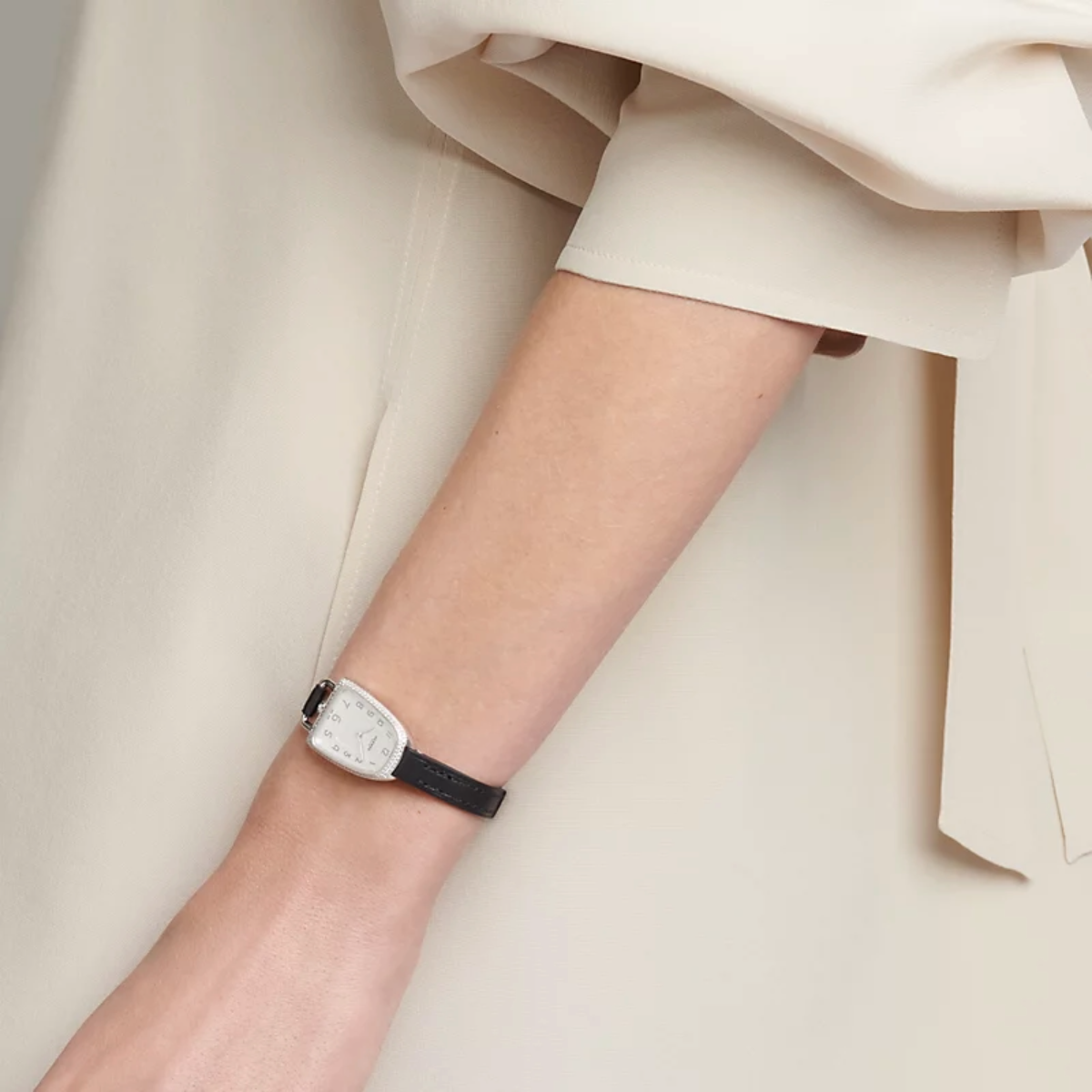Do watches. Do watches. Do watches. Do watches. Do watches
have a gender?. have a gender?. have a gender?. have a gender?
Do watches have a gender?
by Christophe Roulet
A growing number of brands are taking gender out of their vocabulary. Watches are now marketed from the perspective of comfort and the best fit for the customer's lifestyle – a trend that came under scrutiny at Watches and Wonders.
How many brands no longer distinguish between men's and women's watches, in favour of products that any gender can wear? Examples were legion among the novelties on show at Watches and Wonders Geneva 2024. The fair, held in April, hosted a panel discussion – Towards a non-gendered watch – to debate whether watches are now designed outside the traditional male/female schema. "A watch is an object and has no gender," commented Arthur Touchot, head of digital strategy at Phillips in Association with Bacs & Russo. "It only becomes gendered when it touches someone's skin. In the auction world, if you look at catalogues, you can search watches by brand or price range, but no auction house presents watches as male or female."
"It is a shortcut and I believe it narrows the dialogue," continued Laetitia Hirschy, co-founder of Watch Femme and founder of Kaaviar PR. "The US market, for example, doesn't really like this gendered approach. Brands are more likely to talk about sizes, whether the watch is gem-set or not, if it's quartz or mechanical, the idea being that the customer should feel comfortable with the watch on their wrist."
Subtle distinction
This doesn't mean doing away with distinctions entirely, as designer Ini Archibong explained: "It's important to remember that watchmaking is an industry and as such it has a nomenclature. When a brand asks me to design a watch, it has a specific idea in mind. For the Hermès Galop, for example, the brand was clear that it wanted a feminine watch. As a designer, I don't necessarily think, this watch will go to a woman, but see it as the brand's way of saying there is a bit more freedom to make it more fashion-forward. One of the important things for the Galop was that it had to be comfortable for what would most likely be female customers but at the same time, I wanted it to fit in a space where it didn't need to be gendered, thinking simply in terms of wrist size. We're seeing men wearing vintage watches, which are usually smaller than current standards, and women choosing large sports models. The industry is evolving perhaps more slowly than customers, who don't seem so focused on male/female distinctions."
Does this mean size is the new divider? Arthur Touchot had his view on the subject: "As Ini said, we're talking about the evolution of a product and the wristwatch is only a hundred years old, so it is quite new. During those hundred years, the wristwatch has gone through miniaturisation, complications, movements have evolved. Initially, perhaps, the industry had to explain why people should be wearing watches and possibly at some point there was the need to explain the difference between a man's watch and a woman's watch. I think we're getting past that and that today people understand what watches are. Coming back to wrist size and vintage watches, we are seeing more appreciation of smaller watches. And from the broader perspective of collecting, women buyers are now a much larger part of auction houses' audience and will bid very competitively for the watch they want."
Size and lifestyle
The gender/no-gender topic popped up in several other Watches and Wonders panels, including a discussion on Jewellery in watchmaking. "Women customers are increasingly attentive to the movement inside their watch and this includes gem-set models. We are seeing growing interest among women for watches set with coloured stones and equipped with a mechanical movement," insisted Pierre Salanitro whose company, Salanitro SA, sets gemstones in luxury watches. "At the same time, men are increasingly drawn to gem-set watches." "We're moving towards an offering that goes beyond gender boundaries," confirmed Marie de Pimodan, editor-in-chief at GMT Magazine, in answer to the question What's trending in terms of new products? She gave the example of the large Panthère de Cartier, launched in the early 1980s, as a watch that was "designed for women and now worn by a lot of men" along with the Patek Philippe Aquanaut Travel Time, this year proposed in rose gold with a quartz movement in a 39mm diameter that's proving popular with men. Her conclusion? "Brands propose and customers, men and women, take their pick."
Does this mean brands should be rethinking their marketing message? "Brands are now more likely to categorise watches by lifestyle rather than as a man's or a woman's watch," Laetitia Hirsch confirmed. "Brand values are another approach, creating a community around a shared value system. It's not about being a man or a woman but having common values." The debate then moved to the subject of retail space and opportunities to present watches in a more nuanced but still structured way. "I believe a successful brand creates a retail experience that elevates the space to an almost spiritual level, a temple to that brand," said Ini Archibong. "If they truly curate the experience, they can explain their perspective on femininity and masculinity in a way that doesn't need to be compartmentalised." Proof of this, Laetitia Hirschy shared her experience of visiting the Piaget booth, where a beautiful fully gem-set watch caught her eye. She was told it was a reissue of a 1989 cocktail watch… for men!


